The cut of any tobacco is determined by the product that is going to be manufactured: pipe tobacco, cigarettes, cigars, chewing tobacco or snuff. Here I only will go into pipe tobacco cuts (and a bit of cigarette cuts). The ultimate goal of any tobacco manufacturer (or home blender) is to get a well mixed tobacco with a consistent uniformity in taste and “rate of burn”. That means it may not burn too fast (in which case it would probably burn hot) or too slow (which will require the smoker to relight often).
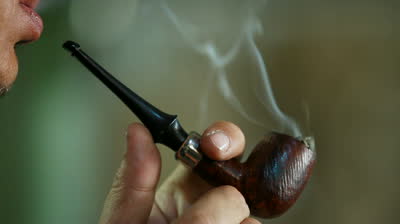 The burning qualities of any blend are determined by the following factors:
The burning qualities of any blend are determined by the following factors:
1. The type of tobacco used. Thin leaved tobacco will burn better than tobacco with heavier leaves.
2. The moisture content of the tobacco. The degree of dryness affects the speed with which it burns.
3. The type of cut or cuts used. The air circulating around the shredded leaf determinates the rate of combustion. The denser the tobacco, such as plugs, the slower it will burn.
4. The amount of casing or flavouring used. The less casing applied to tobacco, the longer it will burn.
Below I described a lot of tobacco cuts. I am sure I missed some and sorting them out was pretty damn difficult.. Several tobacco cut descriptions are in essence the same. If you think I am wrong somewhere or you know cuts I have not described, please contact me so we all can benefit from that information. Anyway, here they are in alphabetical order:
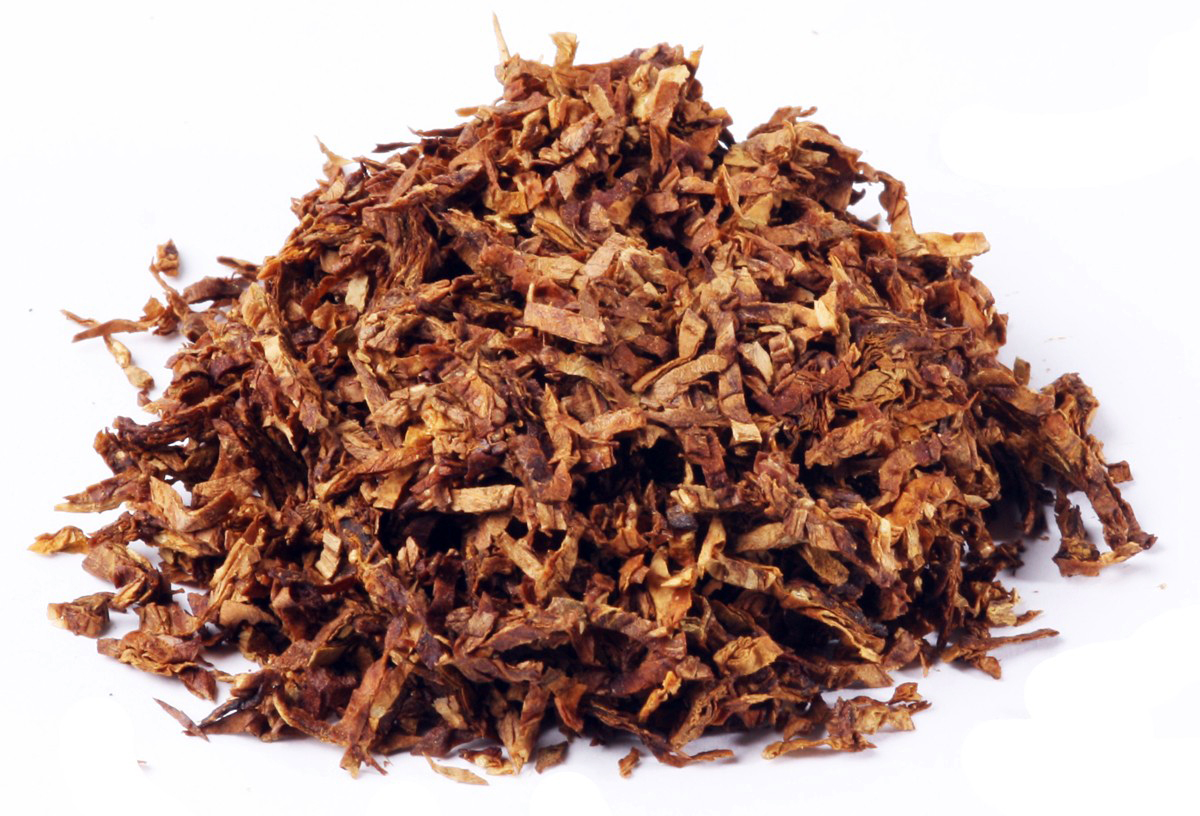 Broad Cut: Wide ribbon-cuts which burn at an average pace and pack well are often called broad cut. The thickest cut, about twice as wide as a loose cut. Commonly used with air-cured Virginia which is then used to blend with other cuts.
Broad Cut: Wide ribbon-cuts which burn at an average pace and pack well are often called broad cut. The thickest cut, about twice as wide as a loose cut. Commonly used with air-cured Virginia which is then used to blend with other cuts.
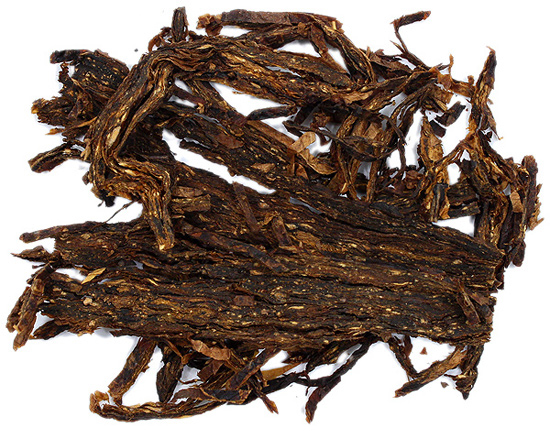 Broken Flake: Flake-form tobacco that has been partially broken up.
Broken Flake: Flake-form tobacco that has been partially broken up.
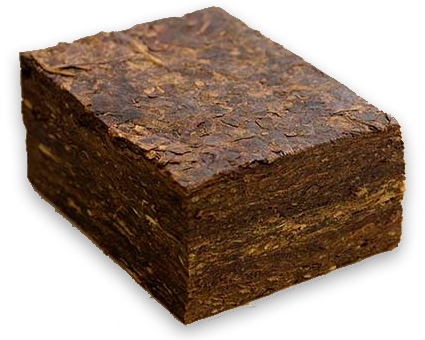 Cake: Cakes (also called “plugs”) are dense, hold their moisture well and therefore are handy to carry with you. But they require a little preparation before smoking. The smoker slices off a bit to the thickness he desires and rubs it between his hands to create a fine or coarse tobacco. Whatever his preference is. It can also be cut into thicker slices and then cross-cut twice to make a rough cube-cut. Very versatile this one. Also see “Plug”.
Cake: Cakes (also called “plugs”) are dense, hold their moisture well and therefore are handy to carry with you. But they require a little preparation before smoking. The smoker slices off a bit to the thickness he desires and rubs it between his hands to create a fine or coarse tobacco. Whatever his preference is. It can also be cut into thicker slices and then cross-cut twice to make a rough cube-cut. Very versatile this one. Also see “Plug”.
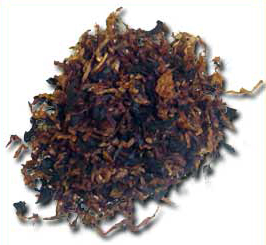 Cavendish Cut: In older blends, Cavendish was generally referred to as tobaccos which had been treated with flavourings or even sugar water. Sometimes they were steamed and then pressed, cut and rubbed-out. These were the original aromatics. Through the years the term has become broadly used and refers to many flavoured tobacco blends. Most of the times the Cavendish Cut was a long cut, between a fine cut and a ribbon cut, depending on the manufacturer.
Cavendish Cut: In older blends, Cavendish was generally referred to as tobaccos which had been treated with flavourings or even sugar water. Sometimes they were steamed and then pressed, cut and rubbed-out. These were the original aromatics. Through the years the term has become broadly used and refers to many flavoured tobacco blends. Most of the times the Cavendish Cut was a long cut, between a fine cut and a ribbon cut, depending on the manufacturer.
 Coarse Cut: Ribbon cut containing some chunkier pieces.
Coarse Cut: Ribbon cut containing some chunkier pieces.
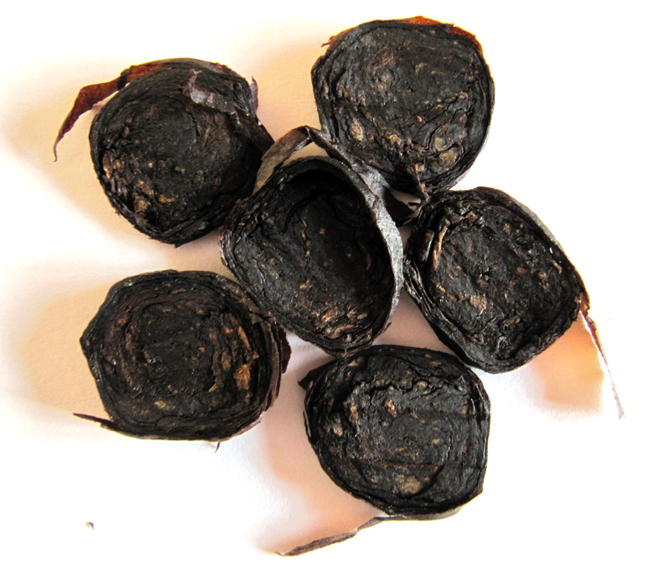 Coin: Thin tobacco circles which look like coins. You get those when you cut a navy plug, twist, rope or roll cake. The terms “Coin”, “Medallion”, “Roll Cut”, “Navy Cut” and “Spun Cut” are all pretty much interchangeable as they are all sliced off round-shaped, pressed (or spun) tobacco.
Coin: Thin tobacco circles which look like coins. You get those when you cut a navy plug, twist, rope or roll cake. The terms “Coin”, “Medallion”, “Roll Cut”, “Navy Cut” and “Spun Cut” are all pretty much interchangeable as they are all sliced off round-shaped, pressed (or spun) tobacco.
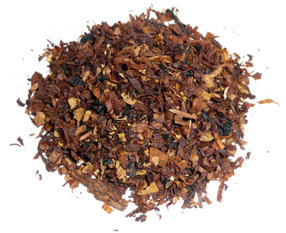 Crimp Cut: This is a slightly smaller cut than the granulated one.
Crimp Cut: This is a slightly smaller cut than the granulated one.
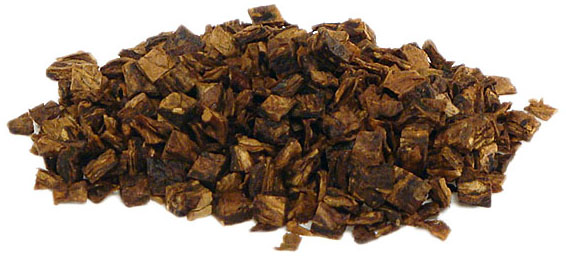 Cross Cut: A broad cut that is cut twice, creating small squares.
Cross Cut: A broad cut that is cut twice, creating small squares.
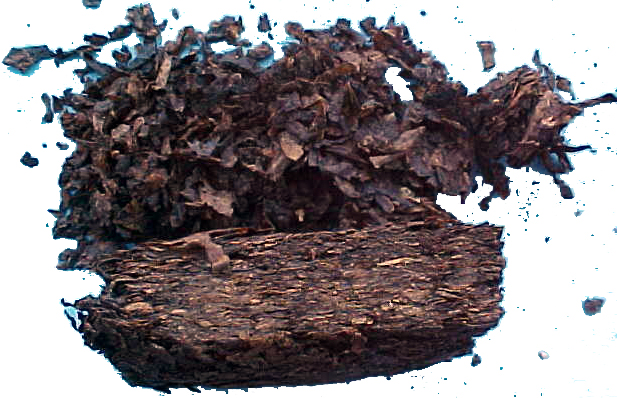 Crumble Cake: Cakes that are made from ribbon-cut tobaccos. The smoker can easily break off a chunk, crumble it between the fingers and prepare it for smoking. This form shares the moisture-holding capacity of plugs. With the added convenience of being somewhat easier to make ready. The downside is that this form tends to break into small fragments. Which can clog the airway or burn too quick. So if you load a pipe with a crumble cake, put some bigger chunks in the bottom of the bowl and the small fragments on top.
Crumble Cake: Cakes that are made from ribbon-cut tobaccos. The smoker can easily break off a chunk, crumble it between the fingers and prepare it for smoking. This form shares the moisture-holding capacity of plugs. With the added convenience of being somewhat easier to make ready. The downside is that this form tends to break into small fragments. Which can clog the airway or burn too quick. So if you load a pipe with a crumble cake, put some bigger chunks in the bottom of the bowl and the small fragments on top.
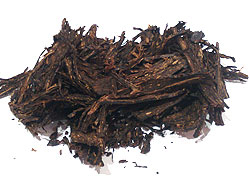 Crushed Plug: This tobacco is cut at right angles to a plug. It may be classified as a coarser and larger granulated tobacco cut.
Crushed Plug: This tobacco is cut at right angles to a plug. It may be classified as a coarser and larger granulated tobacco cut.
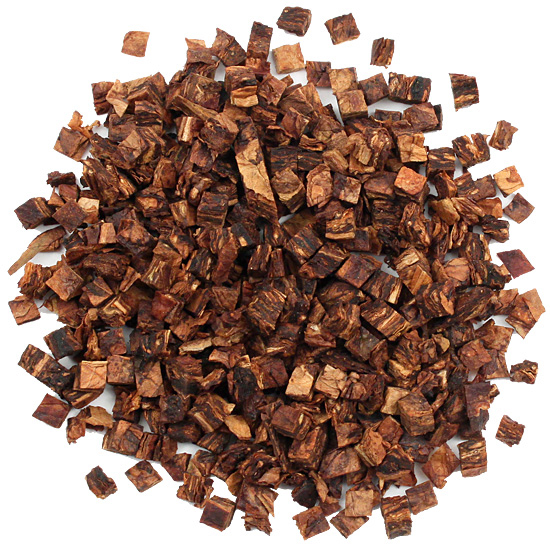 Cube Cut: Pressed tobacco which has been cut into fine or coarse cube-shaped pieces. The most common type is cube-cut Burley. The thick, chunky pieces burn slowly, so cube-cut tobaccos normally smoke quite cool.
Cube Cut: Pressed tobacco which has been cut into fine or coarse cube-shaped pieces. The most common type is cube-cut Burley. The thick, chunky pieces burn slowly, so cube-cut tobaccos normally smoke quite cool.
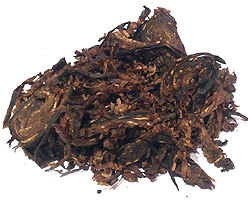 Curly: Thin tobacco circles you get when you cut a navy plug, twist or roll cake. In my experience a curly cut tobacco is much rougher in appearance as for instance neatly stacked medallions in a tin.
Curly: Thin tobacco circles you get when you cut a navy plug, twist or roll cake. In my experience a curly cut tobacco is much rougher in appearance as for instance neatly stacked medallions in a tin.
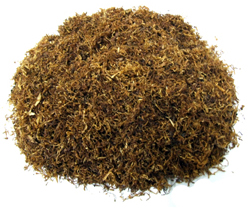 Fine Cut: Usually used for (roll-your-own) cigarette tobacco. This is a variation of a long cut and shag cut. Fine cut tobacco is cut between 30 and 40 times to the inch when it is to be used in pipe tobacco. In cigarette tobacco that is 50 to 90 times to the inch.
Fine Cut: Usually used for (roll-your-own) cigarette tobacco. This is a variation of a long cut and shag cut. Fine cut tobacco is cut between 30 and 40 times to the inch when it is to be used in pipe tobacco. In cigarette tobacco that is 50 to 90 times to the inch.
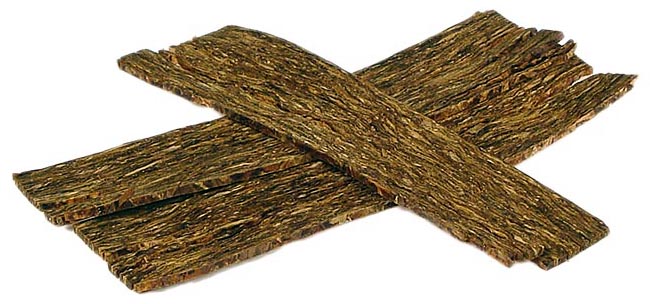 Flake: Tobacco is placed under very high pressure with varying degrees of heat. It is then pressed into bricks and sliced into broad, flat flakes. These are typically about 1-2 inches wide and 0.1 inches thick. You fold or lightly rub the flake to put it in your pipe. There can be many different tobaccos in a flake. These tobaccos benefit from the pressing because it allows their flavours, densities and moisture levels to marry. It will also help them to have a better synergy as they age. The most common flakes are based upon Virginia and Virginia-perique tobaccos. This because of the density of the flake the Virginia will burn more slowly so you get a cooler smoke.
Flake: Tobacco is placed under very high pressure with varying degrees of heat. It is then pressed into bricks and sliced into broad, flat flakes. These are typically about 1-2 inches wide and 0.1 inches thick. You fold or lightly rub the flake to put it in your pipe. There can be many different tobaccos in a flake. These tobaccos benefit from the pressing because it allows their flavours, densities and moisture levels to marry. It will also help them to have a better synergy as they age. The most common flakes are based upon Virginia and Virginia-perique tobaccos. This because of the density of the flake the Virginia will burn more slowly so you get a cooler smoke.
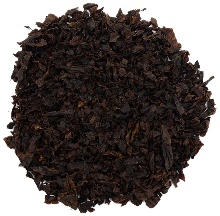 Granulated Cut: tobacco is cut from stemmed leaf in irregularly shaped, medium sized flakes. Because this cut of tobacco packs quite well with air spaces between particles, it burns slow and cool.
Granulated Cut: tobacco is cut from stemmed leaf in irregularly shaped, medium sized flakes. Because this cut of tobacco packs quite well with air spaces between particles, it burns slow and cool.
Lanyard: See “Rope”.
Long Cut: See “Shag cut”.
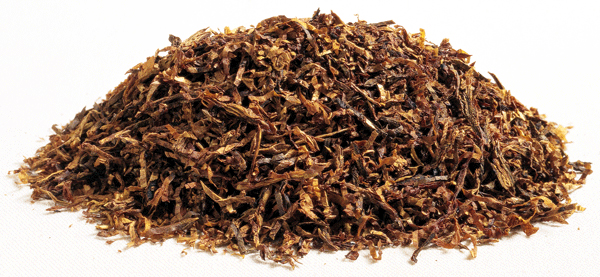 Loose Cut: A long, thin ribbon cut. Commonly found in many Captain Black and Lane Bulk blends.
Loose Cut: A long, thin ribbon cut. Commonly found in many Captain Black and Lane Bulk blends.
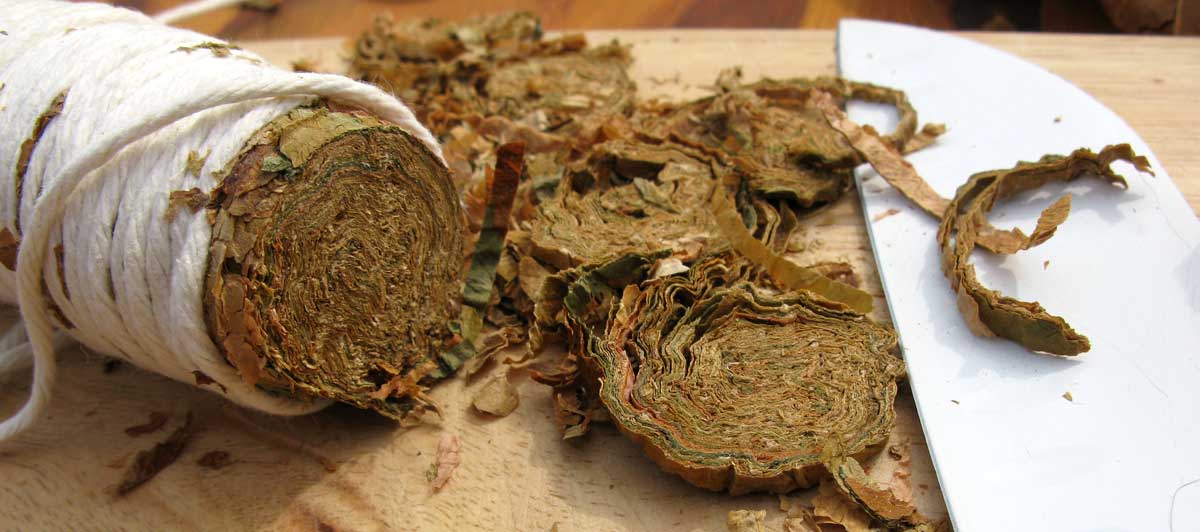 Navy Plug: This name was given because sailors would fill a long canvas tube with tobacco (or tightly wrap rope around tobacco) and sometimes add flavourings like rum, fruits and spices. Then the tube was twisted tight, mimicking the pressing process. This technique created a dense roll of tobacco about an inch thick which could be cut into smaller pieces or coins. In essence the navy plug is the same as a roll-cake.
Navy Plug: This name was given because sailors would fill a long canvas tube with tobacco (or tightly wrap rope around tobacco) and sometimes add flavourings like rum, fruits and spices. Then the tube was twisted tight, mimicking the pressing process. This technique created a dense roll of tobacco about an inch thick which could be cut into smaller pieces or coins. In essence the navy plug is the same as a roll-cake.
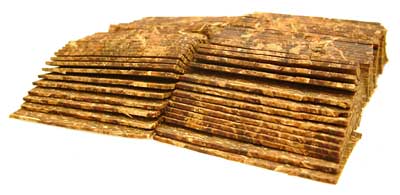 Navy Cut: The slices you get when you cut a navy plug. Originally these had a round shape. Later tobacco manufacturers used the term more broadly and a Navy Cut could also be a rectangular flake or slice (for example Capstan). Good examples of round Navy Cut tobaccos are Escudo and Peter Stokkebye Luxury Bullseye Flake.
Navy Cut: The slices you get when you cut a navy plug. Originally these had a round shape. Later tobacco manufacturers used the term more broadly and a Navy Cut could also be a rectangular flake or slice (for example Capstan). Good examples of round Navy Cut tobaccos are Escudo and Peter Stokkebye Luxury Bullseye Flake.
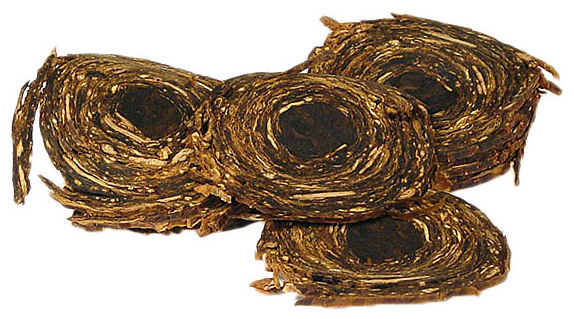 Medallion: See “Coin” and “Navy Cut”.
Medallion: See “Coin” and “Navy Cut”.
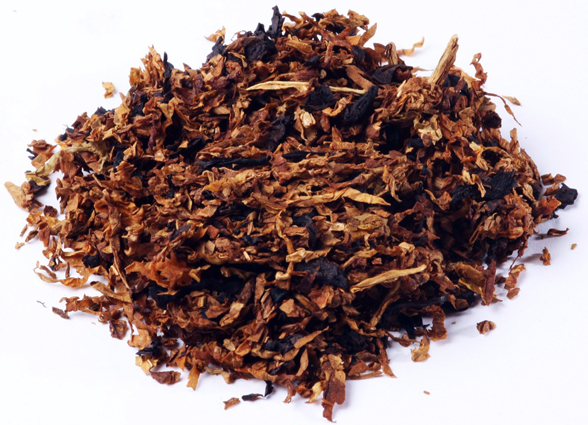 Mixture: A term often seen on pipe tobacco packages. It simply is a mix of different tobacco types, cuts and flavours.
Mixture: A term often seen on pipe tobacco packages. It simply is a mix of different tobacco types, cuts and flavours.
Plug: See “Cake”.
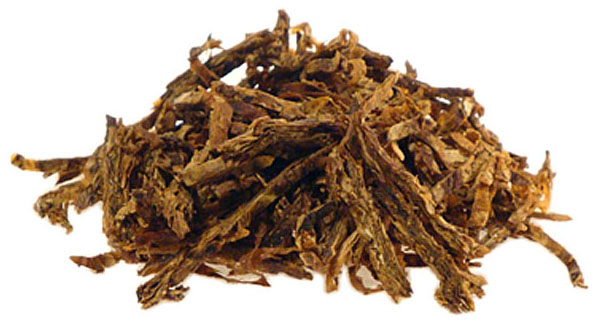 Ready-rubbed: Flake tobacco that has been mechanically rubbed out so it can be readily smoked or combined with other cuts. Sometimes you see a regular ribbon cut with pieces of ready-rubbed Virginia flake. This way the Virginia can’t burn too fast and hot and the smoke is kept cool.
Ready-rubbed: Flake tobacco that has been mechanically rubbed out so it can be readily smoked or combined with other cuts. Sometimes you see a regular ribbon cut with pieces of ready-rubbed Virginia flake. This way the Virginia can’t burn too fast and hot and the smoke is kept cool.
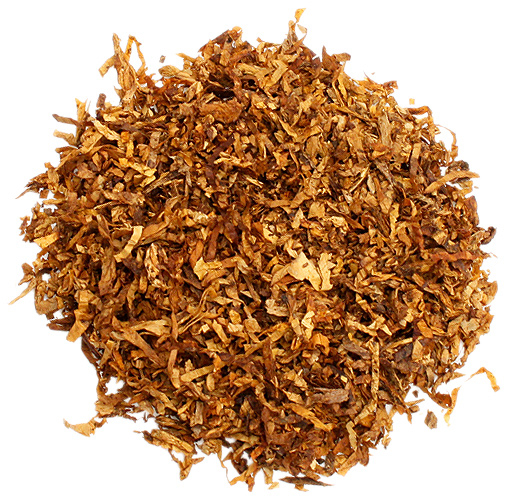 Ribbon Cut: More narrow than a broad cut, this has a steady burn and it packs well. It is a good cut for tobaccos that don’t burn easily. Often you see latakia as a ribbon cut because of its poor burning qualities.
Ribbon Cut: More narrow than a broad cut, this has a steady burn and it packs well. It is a good cut for tobaccos that don’t burn easily. Often you see latakia as a ribbon cut because of its poor burning qualities.
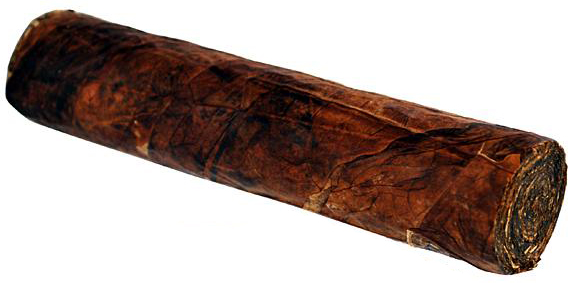 Roll Cake: Similar to a Navy Plug, round in appearance.
Roll Cake: Similar to a Navy Plug, round in appearance.
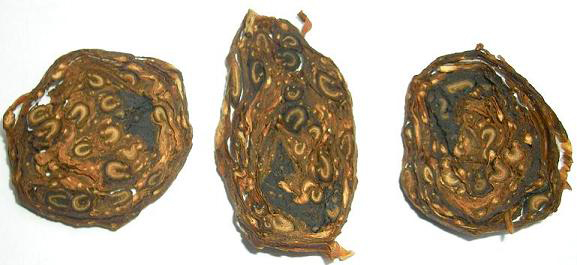 Roll Cut: A sliced version of roll cake. See “Medallion” and “Coin”.
Roll Cut: A sliced version of roll cake. See “Medallion” and “Coin”.
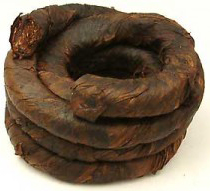 Rope: The tobacco is spun by machine into long ropes which can be as much as 60 feet long which are then cut in larger pieces for sale. There are a few of these ropes which are cut into coins before they are finally packed.
Rope: The tobacco is spun by machine into long ropes which can be as much as 60 feet long which are then cut in larger pieces for sale. There are a few of these ropes which are cut into coins before they are finally packed.
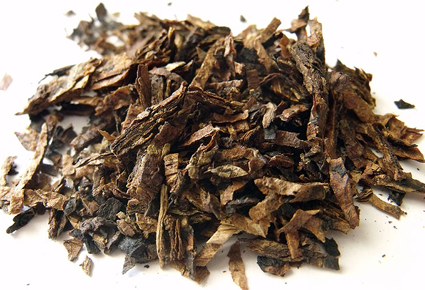 Rough Cut: Tobaccos which are cut into larger flat pieces, a heavier version of the granulated cut. This cut burns slowly and can be used to keep hotter tobaccos from burning too fast.
Rough Cut: Tobaccos which are cut into larger flat pieces, a heavier version of the granulated cut. This cut burns slowly and can be used to keep hotter tobaccos from burning too fast.
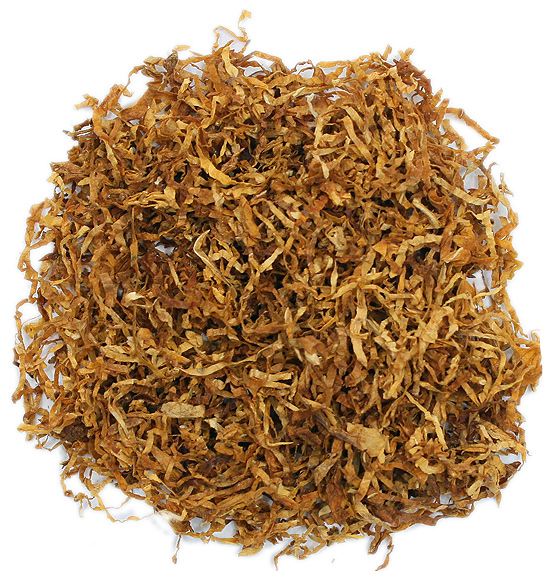 Shag Cut: Tobacco which is finely cut/shredded into long threads. It is thinner and longer than a ribbon cut. It may range from a 19th of an inch to a 16th in width and in length from a half inch to an inch. Virginia tobaccos lend themselves to this cut because of their large leaf size. A shag cut can easily pack too tightly and burns very well. Just like a fine cut this cut is common for roll-your-own cigarette tobaccos as well.
Shag Cut: Tobacco which is finely cut/shredded into long threads. It is thinner and longer than a ribbon cut. It may range from a 19th of an inch to a 16th in width and in length from a half inch to an inch. Virginia tobaccos lend themselves to this cut because of their large leaf size. A shag cut can easily pack too tightly and burns very well. Just like a fine cut this cut is common for roll-your-own cigarette tobaccos as well.
 Slices: In essence the same as flakes. The only noticeable difference is the thickness; slices are thicker than flakes. One of the most well-known tobaccos of this type is (of course) Troost Slices.
Slices: In essence the same as flakes. The only noticeable difference is the thickness; slices are thicker than flakes. One of the most well-known tobaccos of this type is (of course) Troost Slices.
Spun Cut: See “Curly” “Coin” and “Medallion”.
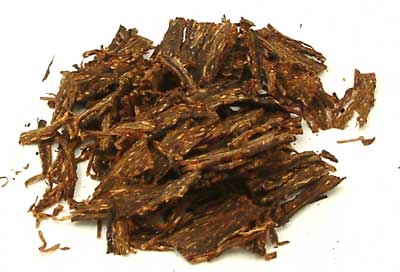 Square Cut: Flakes which are cut in squares, the picture is not so good but the only one I could find. A good example of a square cut is Mick McQuaid Square Cut.
Square Cut: Flakes which are cut in squares, the picture is not so good but the only one I could find. A good example of a square cut is Mick McQuaid Square Cut.
 Twist: Similar to rope. Leaves are layered and then twisted tightly to mature the tobacco. That is why many ropes and twists tend to be rather strong in flavour and nicotine content. It can be sliced into coins for pipe smoking or cut in thicker chunks for chewing.
Twist: Similar to rope. Leaves are layered and then twisted tightly to mature the tobacco. That is why many ropes and twists tend to be rather strong in flavour and nicotine content. It can be sliced into coins for pipe smoking or cut in thicker chunks for chewing.
If I have forgotten any tobacco cuts or if you have any comments, please let me know!

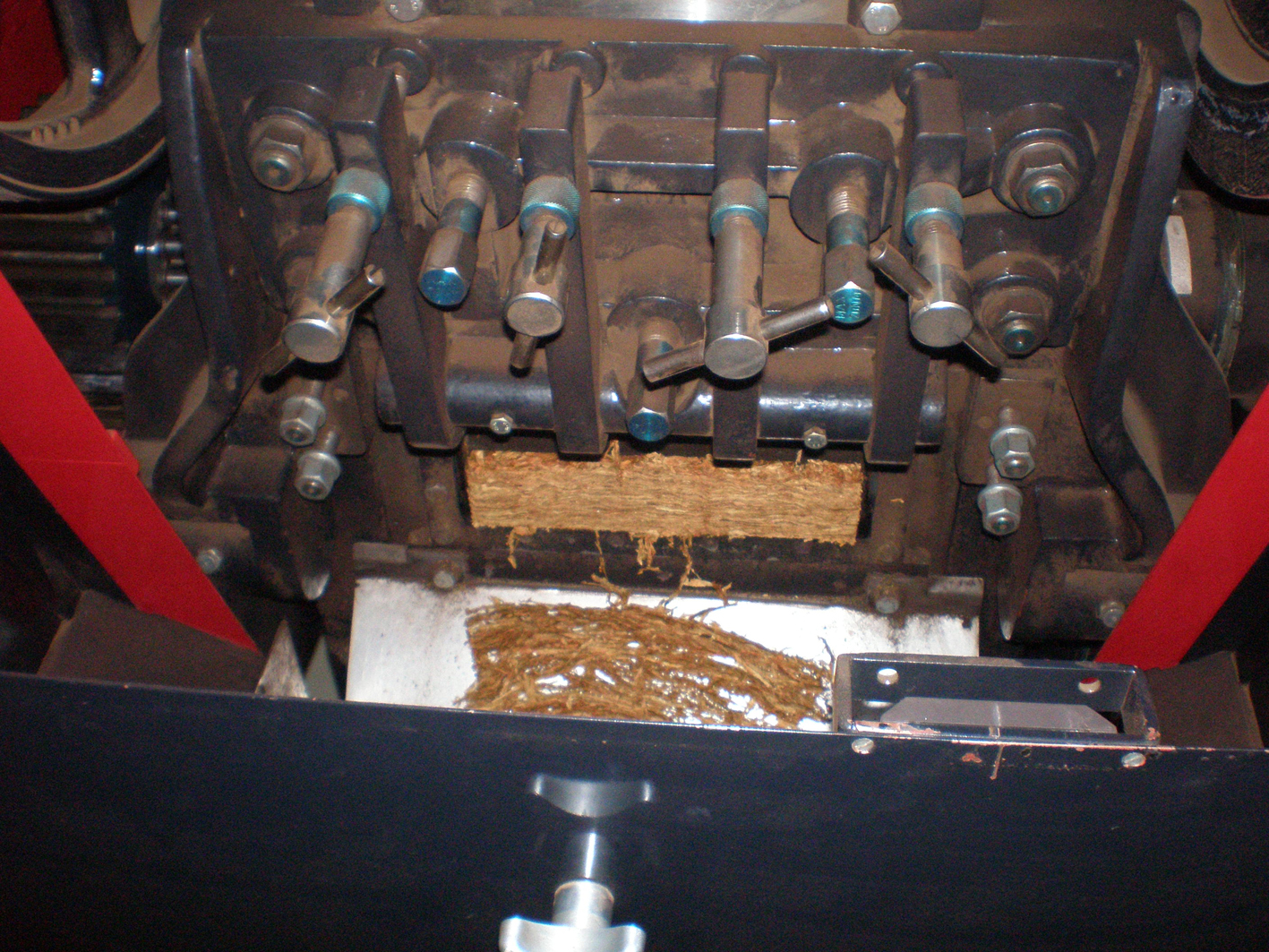
Hey Arno, any idea what blend that is in the ‘Coin’ picture?
Hello Arturo, that is Samuel Gawith Finest Kendal Twist Black XX. I received a sample from it from Paul.
Any good? Only Gawith I’ve tried is their Full VA Flake. Straight VAs aren’t my favorite, but theirs was especially bad, imo. Nice tin note, but the smoke…blech…like a barn fire!
Ehrr… I don’t think you should try it if you already dislike FVF. Taste of the Kendal twist is very natural but also very heavy. And lots of nicotine. What do you normally smoke? From the other side, maybe Paul can send you a sample so you can experience it yourself.
Well, I love the Balkans (McClelland’s 3 Oak Syrian and Blue Mountain, and Pease Abingdon). Also like the VA/Pers I’ve tried, love Escudo, like Orlik Golden Slices, and Stokkebye’s bullseyes are OK (though a bit boring, imo, not sure the Cavendish bullseyes accomplish much). Only one smoke so far, but I really liked Solani’s Aged Burley, which had a similar earthiness in the tin as Gawith’s FVF but made a much nicer smoke. Reading reviews, seems people love or hate the Gawith’s FVF? I didn’t expect to fall into the latter camp, but I did. As for Paul, I think he will run out of tobacco if he includes any more samples. 😉
Wow, you have a similar taste to mine! Also the Balkans and VaPers 🙂 I must admit that it is quite a while ago that I smoked FVF. From what I can remember I liked it, except for the high dose of nicotine..
Have you tried Pease Triple Play yet? Had my first smoke tonight. Think it might be right up your alley, mouthfuls of peppery Perique!
To be honest I did not dare to try Triple Play.. I tried the similar (but without perique) Jackknife Plug, but the dose of nicotine (probably caused by the Kentucky) was just way too high. So I am also afraid of that with Triple Play.. However, I’ve got a tin of another GL Pease blend with perique stashed away to mature: Fillmore.
The N level didn’t seem too bad. I’ll let you know next time I smoke it.
I forgot to mention above that I also tried MacBaren Old Dark Fired for the first time recently. Tin note is really funky (dank mushrooms and unsweetened cocoa) but also a nice smoke. If memory serves, the Vitamin N kicked like a mule in that one. Or maybe it was the Solani Aged Burley…guess I’ll have to smoke them both to jog my memory. 🙂
Ok! 🙂
I already read some things about that one, also about the nicotine.. But I don’t think I’ll buy it. I am just no big Kentucky fan..
In ypur slices entry ypu misspelled well-known as well-knows.
Thank ypu very much, I corrected it.
Hi! Very very impressive blog. I am a new piper (I started earlier this spring) and have found your blog very informative and helpful, as well as tantalizing with reviews of vintage blends 🙂 This is an excellent reference guide and many thank you for posting it as well as your entire blog. Keep up the good work! Thanks
-Josh
Hello Josh, thank you for reading my blog and for smoking a pipe of course! You have a great journey ahead which will never end. That is the fun part of the hobby, there are always new things on the smoke-filled horizon. If you have any questions, feel free to ask them. Happy puffin’!